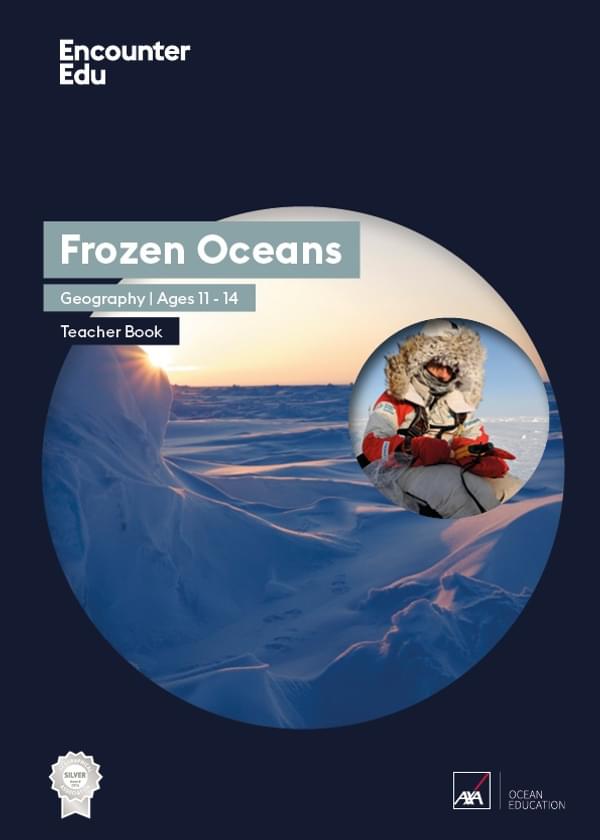Learn more: All about Arctic sea ice and why it is so important
Snow and ice are the two most iconic features of the Arctic. The Arctic Ocean is covered in ice during the winter months and there is sea ice coverage of 4.4 million square kilometres even in the summer (2015 extent). The Arctic forms part of the cryosphere, the frozen habitats of our planet.
The nature of sea ice
Sea ice is frozen ocean water. It forms, grows and melts in the ocean. Other forms of ice can be found in the Arctic Ocean: icebergs, ice shelves and glaciers all float in the ocean, but originate on land.
There is great variation in ice types in the Arctic. Names such as nilas, frazil, grease, leads, pancakes, pressure ridges, rubble and polynyas all describe different states of ice (or gaps in the ice).
Sea ice also differs from fresh water ice when it freezes, expelling the salt content into the ocean and forming tiny channels throughout the sea ice. These ‘brine channels’, as they’re known, provide habitats for microscopic plants and animals.
The changing Arctic sea ice
The sea ice of the Arctic Ocean is constantly changing. Temperatures in the Arctic mean that the ice forms and melts at different times of the year. Ocean currents and waves also mean that the sea ice is often pushed together to create pressure ridges, or pulled apart to create cracks in the ice, known as leads.
The extent of the Arctic sea ice is a measurement of the ocean where there is at least some sea ice. Normally, the Arctic sea ice reaches its maximum extent in March, after the end of the winter cold season and reaches its minimum in September at the end of the Arctic summer.
In 2015, Arctic sea ice extent reached its maximum of 14.5 million square kilometres (5.6 million square miles) on 25 February, and its minimum on 11 September at 4.4 million square kilometres (1.7 million square miles). An interactive graph of the changing extent of Arctic sea ice, since satellite records began, can be found at: nsidc.org/arcticseaicenews/charctic-interactive-sea-ice-graph/.
Importance of the Arctic Ocean and sea ice
The Arctic Ocean and sea ice is important for a number of reasons.
Climate
The white sea ice is better at reflecting solar energy, whilst the black waters absorb more energy from the sun. Loss of sea ice contributes to a warming Arctic. The phenomenon of a bright white surface reflecting the sun is known as the albedo effect.
Habitat loss
Microscopic plants and animals rely on the brine channels within the ice as a habitat and other larger animals, such as polar bears, use the ice for hunting.
The fabled North West passage could become a reality for international shipping, and oil and gas companies are already exploring the region looking for new fields to drill.
Geopolitical
Russia claimed the North Pole in 2007 and the Canadian military is increasing its presence in the Arctic region. Decreasing sea ice means that nations are jostling for their share of the available oil and mineral deposits in the region.
